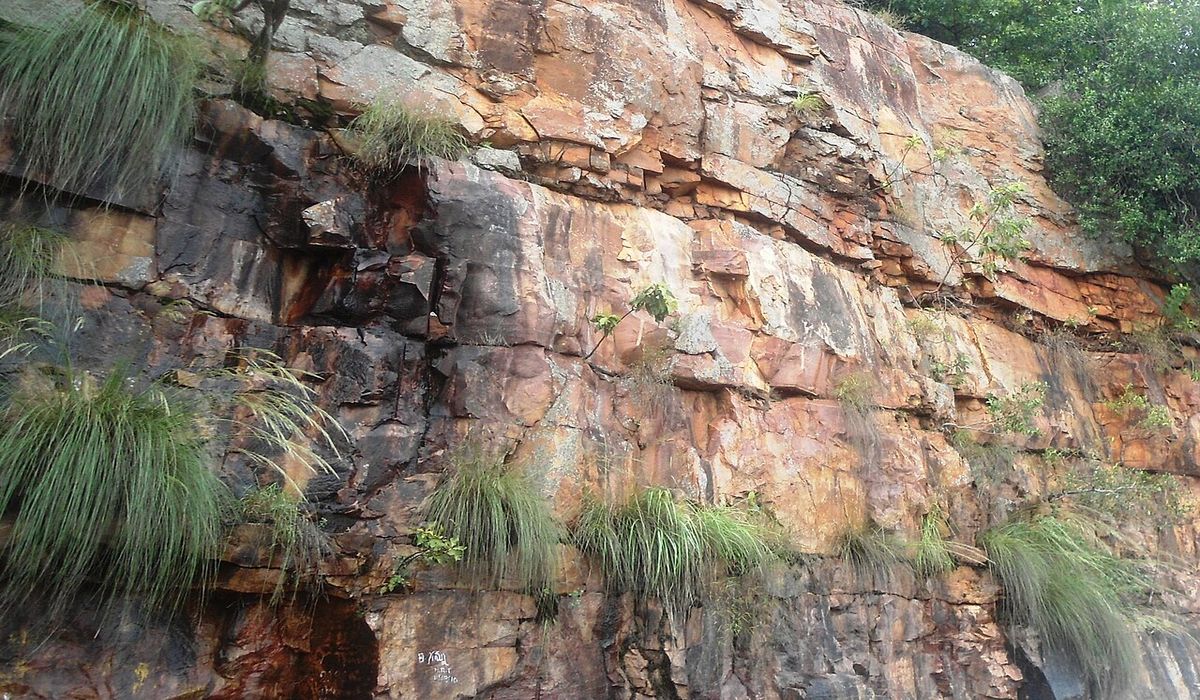
What are detrital rocks? Detrital rocks, also known as clastic sedimentary rocks, form from fragments of other rocks that have been weathered, transported, and deposited. These fragments, or clasts, can range in size from tiny grains of sand to large boulders. Over time, these particles get compacted and cemented together, creating solid rock. Common examples include sandstone, shale, and conglomerate. Detrital rocks are essential for understanding Earth's history because they often contain fossils and provide clues about past environments. They are found in various settings, from riverbeds to deserts, and play a crucial role in the rock cycle.
What are Detrital Rocks?
Detrital rocks, also known as clastic sedimentary rocks, form from the accumulation of fragments of other rocks. These fragments, or clasts, are transported by water, wind, or ice and then deposited in layers. Over time, they are compacted and cemented together to form solid rock.
- Detrital rocks are primarily composed of particles from pre-existing rocks.
- Clasts in detrital rocks can range in size from tiny clay particles to large boulders.
- Common minerals found in detrital rocks include quartz, feldspar, and clay minerals.
- Sediment transport can occur through rivers, glaciers, or wind.
- Lithification is the process that turns loose sediment into solid rock.
Types of Detrital Rocks
Detrital rocks come in various types, each with unique characteristics based on the size and composition of their clasts. Understanding these types helps geologists interpret the history of the Earth's surface.
- Conglomerates are detrital rocks with large, rounded clasts.
- Breccias contain large, angular clasts.
- Sandstones are composed mainly of sand-sized particles.
- Siltstones have finer particles than sandstones but coarser than claystones.
- Shales are made up of very fine clay particles and often split into thin layers.
Formation and Characteristics
The formation of detrital rocks involves several stages, from weathering and erosion to deposition and lithification. Each stage leaves its mark on the rock's characteristics.
- Weathering breaks down rocks into smaller particles.
- Erosion transports these particles to new locations.
- Deposition occurs when particles settle out of the transporting medium.
- Compaction squeezes the particles together, reducing pore space.
- Cementation binds the particles with minerals precipitated from groundwater.
Uses of Detrital Rocks
Detrital rocks have various practical uses due to their abundance and properties. They play a significant role in construction, industry, and even art.
- Sandstone is widely used in building and paving materials.
- Shale is a source of clay for bricks and pottery.
- Conglomerates can be used as decorative stones in landscaping.
- Breccias are often used in road construction as aggregate.
- Siltstone can be used as a raw material in cement production.
Interesting Facts about Detrital Rocks
Detrital rocks hold many fascinating details that reveal much about Earth's history and processes. Here are some intriguing facts that highlight their significance.
- Oldest detrital rocks date back to the Archean Eon, over 2.5 billion years ago.
- Fossils are often found in detrital rocks, providing clues about past life.
- Cross-bedding in sandstones indicates ancient wind or water flow directions.
- Ripple marks on some detrital rocks show evidence of past water movement.
- Mud cracks in shales suggest they formed in drying environments.
- Color variations in detrital rocks can indicate different mineral compositions.
- Porosity in detrital rocks affects their ability to store and transmit groundwater.
Final Thoughts on Detrital Sedimentary Rocks
Detrital sedimentary rocks, formed from fragments of pre-existing rocks, tell stories of Earth's past. These rocks, like sandstone, shale, and conglomerate, reveal clues about ancient environments and geological processes. Understanding their formation helps geologists reconstruct historical landscapes and predict natural resources.
These rocks, composed of minerals like quartz and feldspar, undergo weathering, transportation, and deposition. Their study aids in oil and gas exploration, groundwater management, and environmental conservation. Recognizing their significance enhances our appreciation of Earth's dynamic systems.
In essence, detrital sedimentary rocks are more than just stones. They are records of Earth's history, offering insights into past climates, ecosystems, and tectonic activities. By studying them, we gain a deeper understanding of our planet's evolution and the natural processes shaping it. So next time you see a sandstone cliff or a shale outcrop, remember the ancient tales they hold.
Was this page helpful?
Our commitment to delivering trustworthy and engaging content is at the heart of what we do. Each fact on our site is contributed by real users like you, bringing a wealth of diverse insights and information. To ensure the highest standards of accuracy and reliability, our dedicated editors meticulously review each submission. This process guarantees that the facts we share are not only fascinating but also credible. Trust in our commitment to quality and authenticity as you explore and learn with us.
